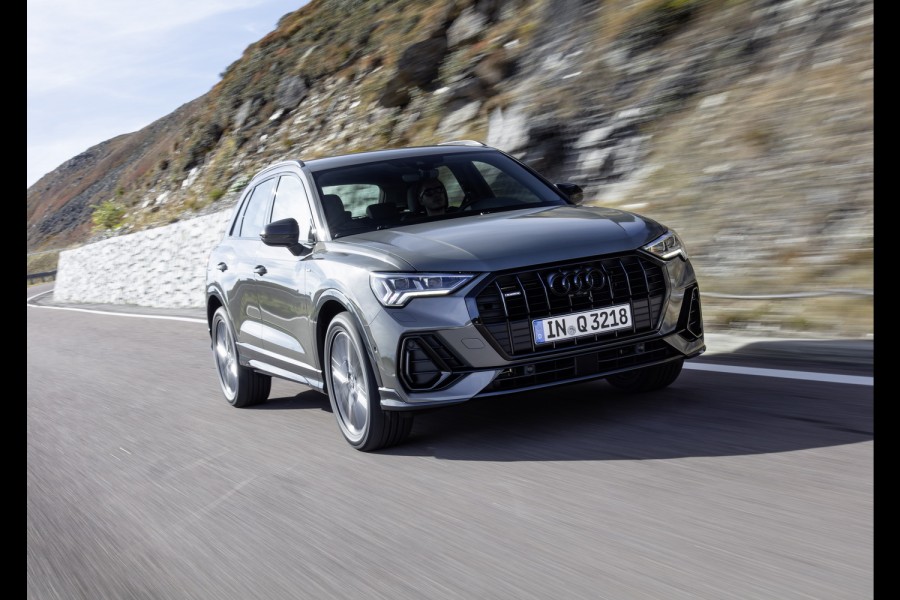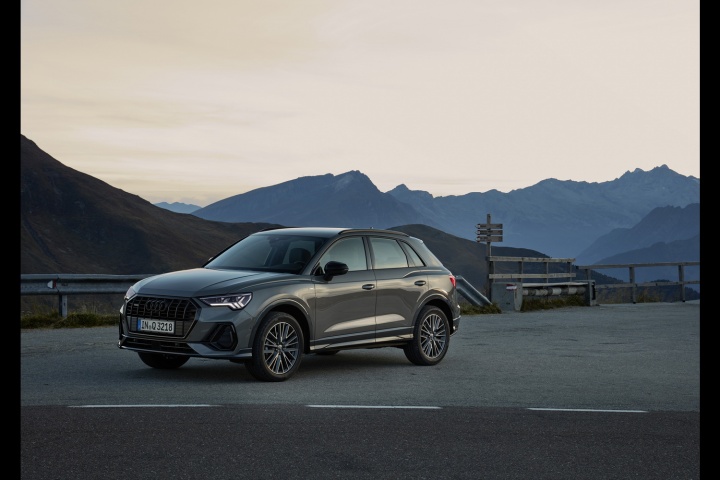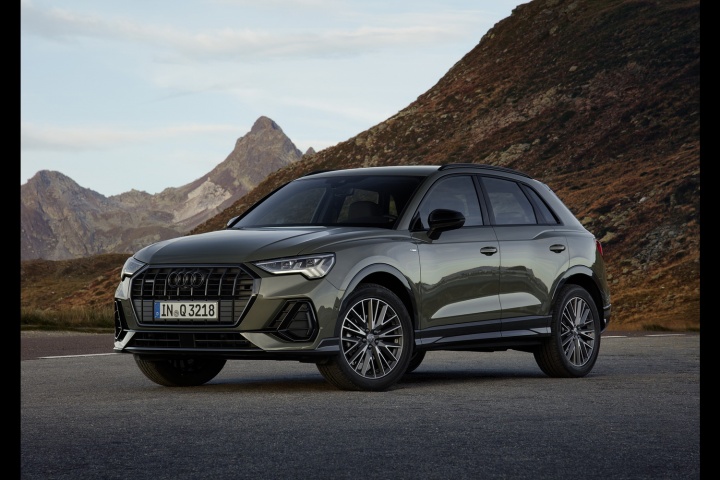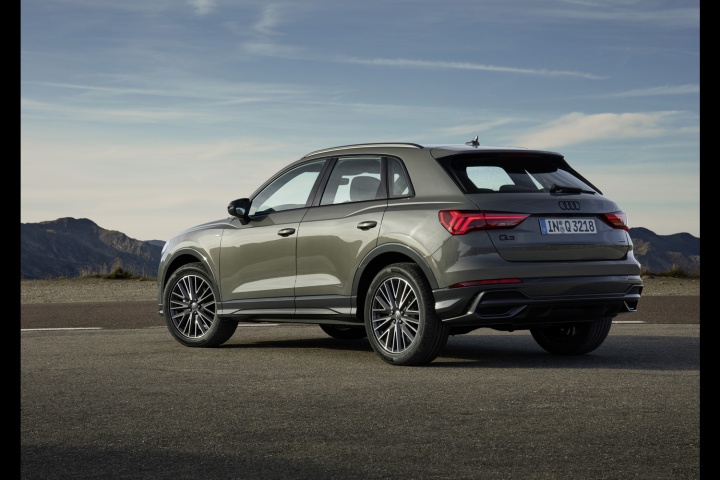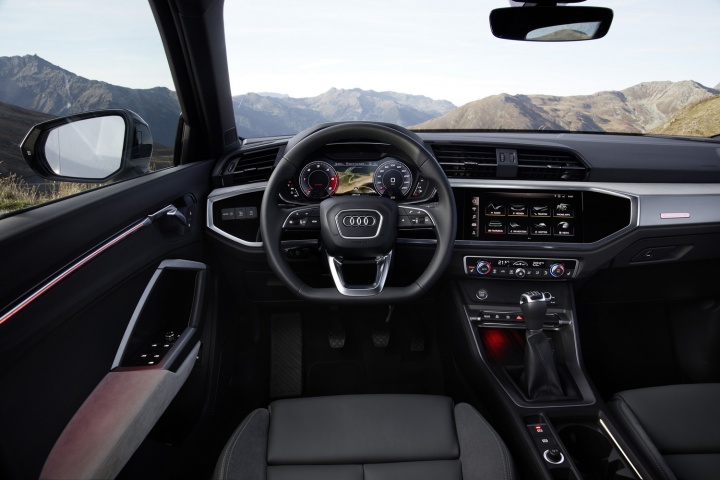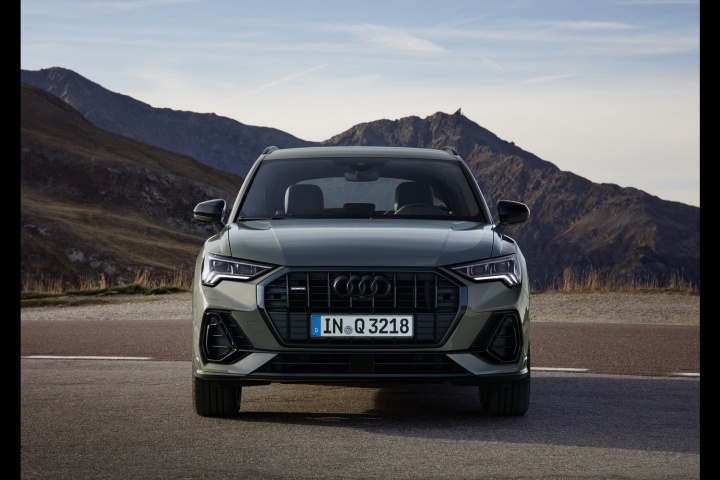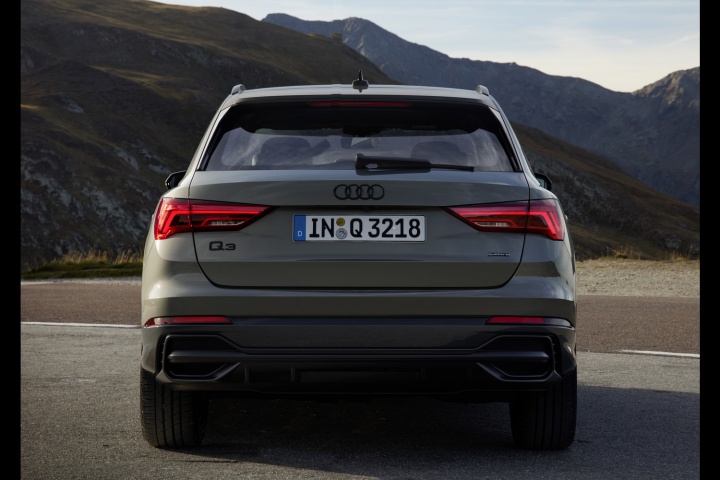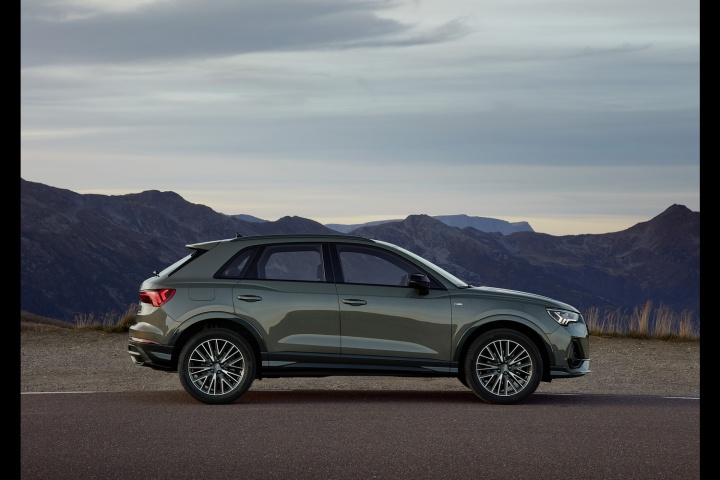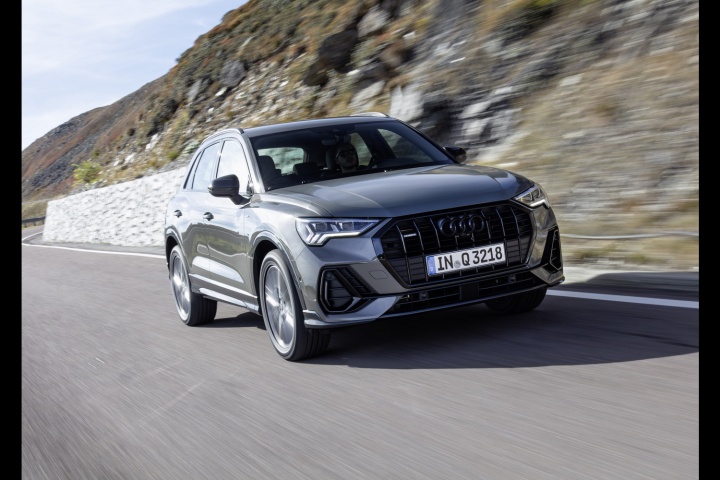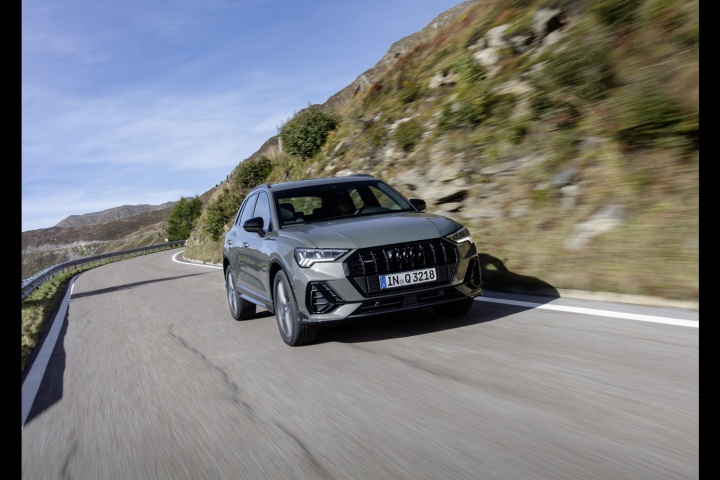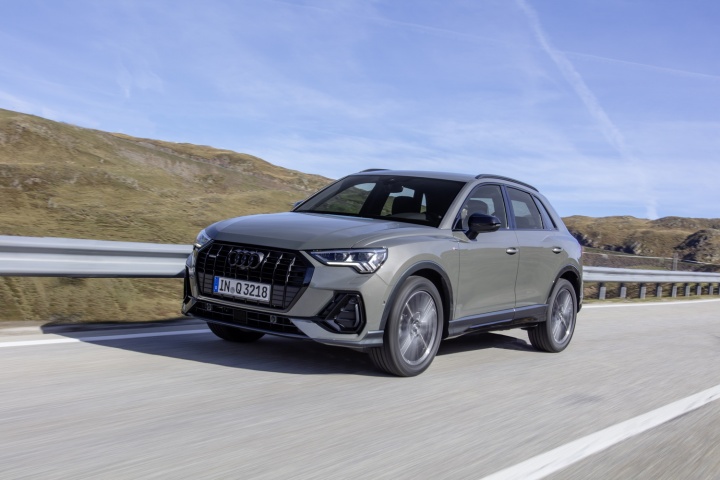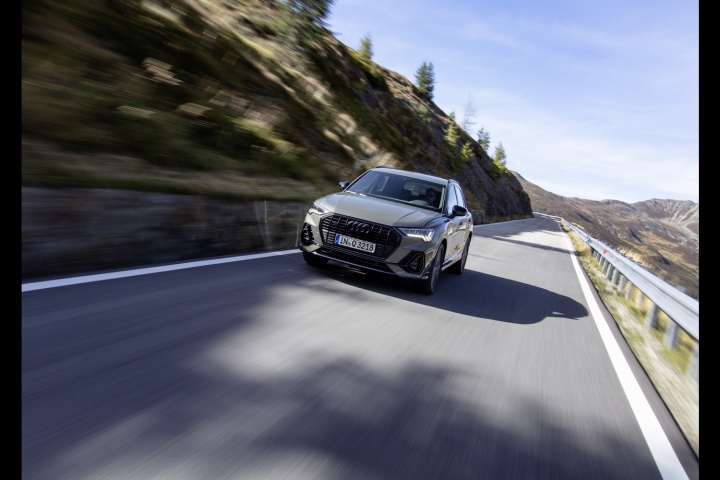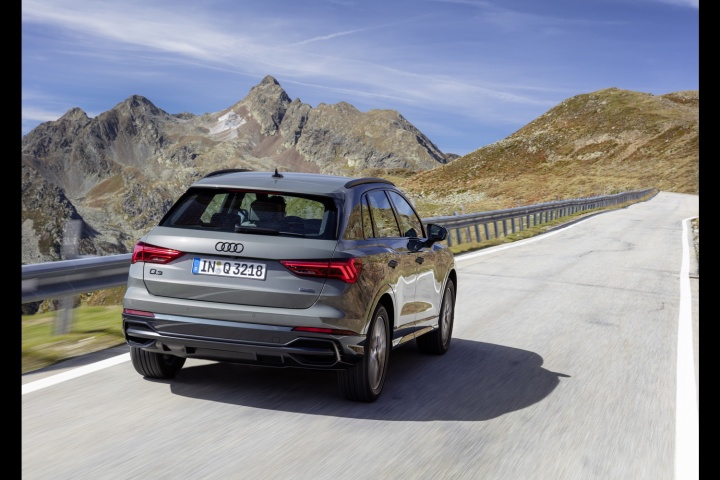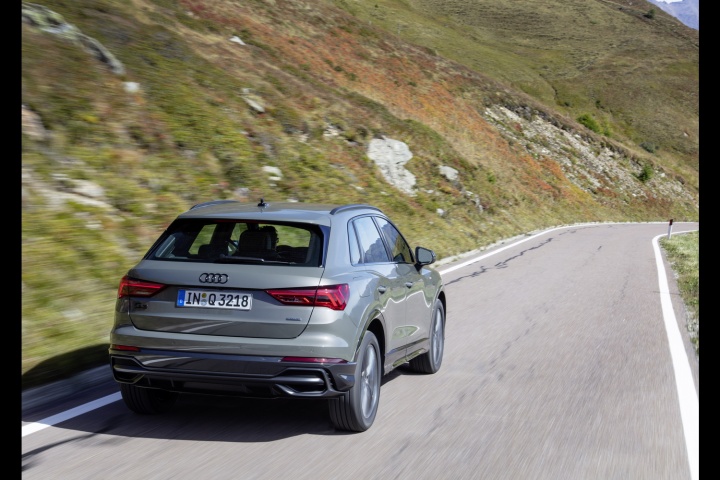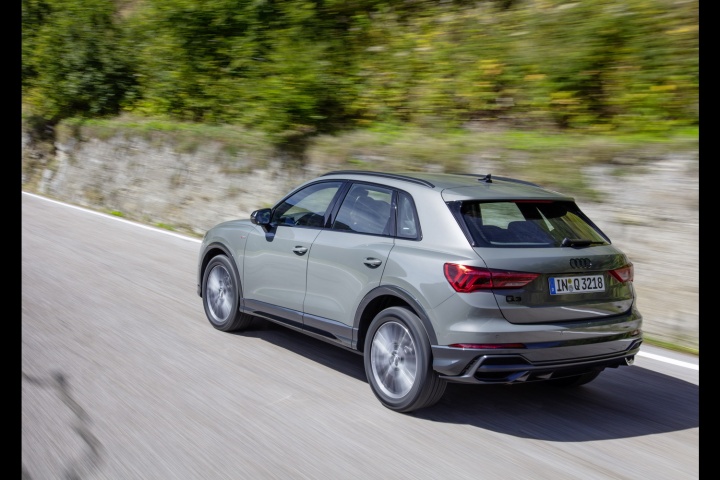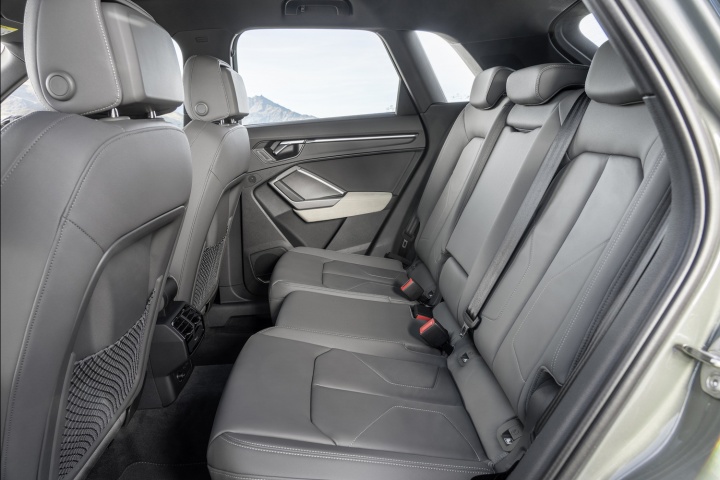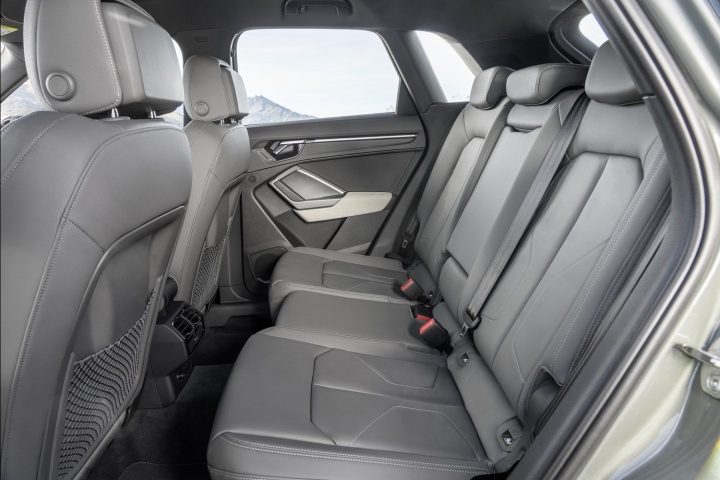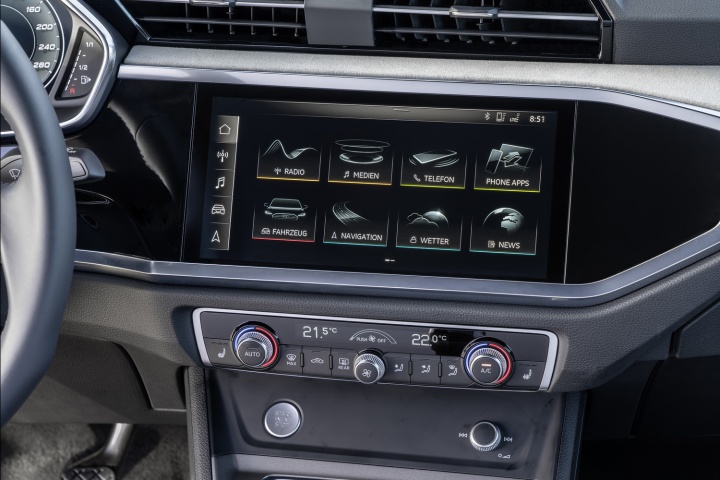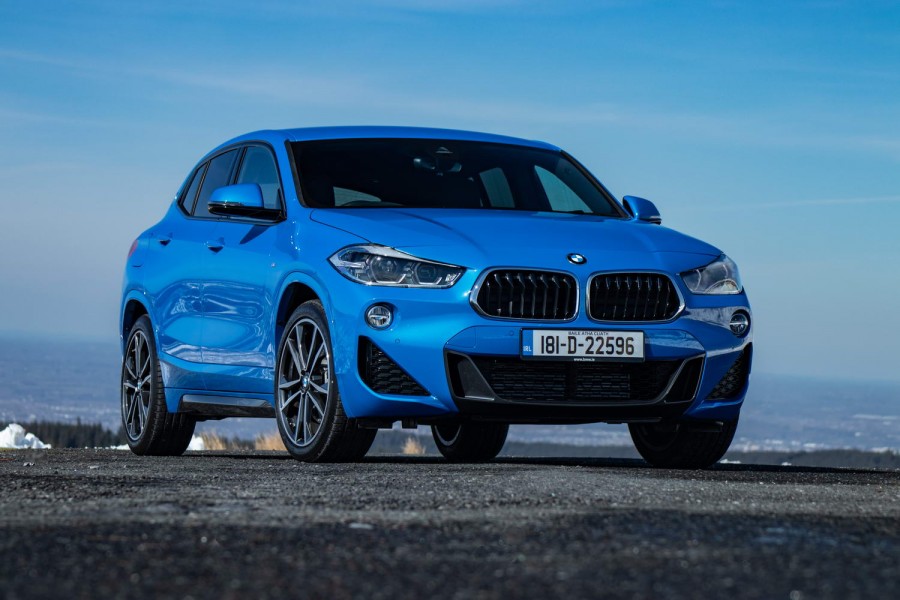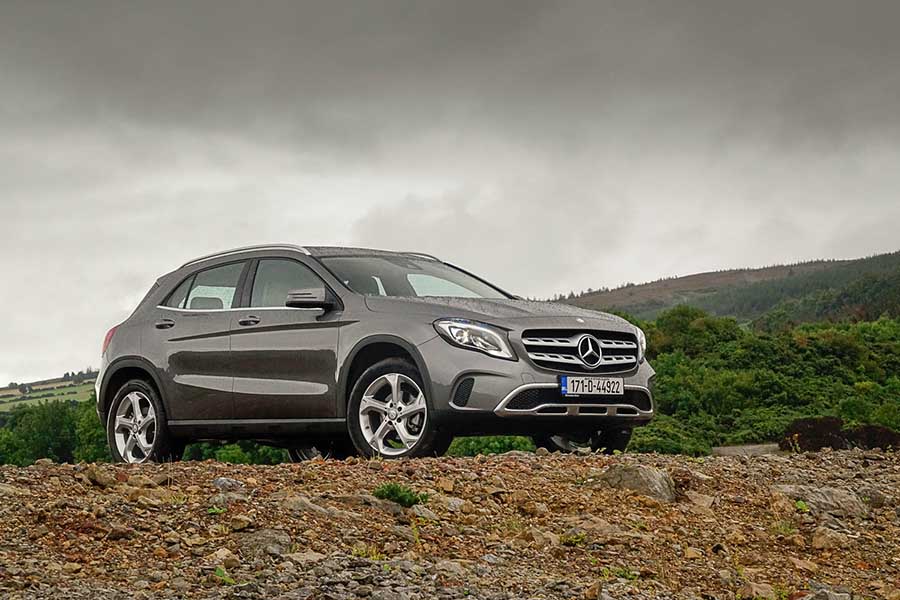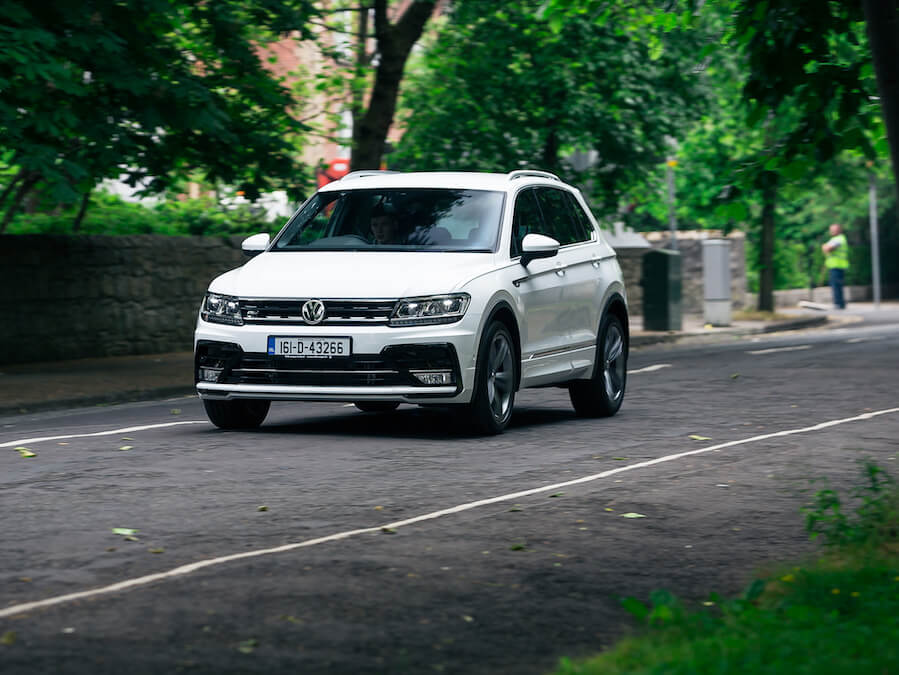The new-for-2019 Audi Q3 takes a massive leap forward in design; and the build quality, upon first inspection, seems to be very good. We were impressed with the petrol 35 TFSI version, but diesel is still just as relevant for many buyers in Ireland and, in the 35 TDI model test driven here we get a chance to see how the Q3 performs with its quattro all-wheel-drive transmission.
In the metal
Like most successors, the Audi Q3 is larger in virtually every parameter than its predecessor, but for the practically-minded, it is the boot that sees the most welcome swelling. Capacity there is up substantially over the previous generation. The ability to slide the rear seat bench fore and aft to either benefit passenger legroom or boost cargo capacity is every bit as useful as the 40/20/40 split folding seats.
But even though the car has grown in size, its proportions are bang on, and the slightly dumpy image of the first-generation Audi Q3 is long gone. Sharp lines, carefully considered cuts in the bodywork and creases to catch the light are the order of the day and, in this instance, they are executed to perfection. There's even, whisper it, a hint of Bentley Bentayga about that rear shoulder line. Among its many rivals, perhaps only the Volvo XC40 can give it a close run in the style stakes.
Unsurprisingly, the Q3 looks best in the sportier S line trim, which means larger wheels and a different body kit. That said, we've seen the car in its more conservative standard trim and it looks no less handsome. The inclusion of some more vibrant colours, such as Turbo Blue and Pulse Orange, may still be a brave choice for most buyers in Ireland, but it's a welcome change to the usual greys and silvers.
The design of the interior makes you stop for a moment and look around when you sit into it for the first time. It is exquisitely finished and shouldn't date too quickly thanks to the fitment of a digital 'Virtual Cockpit' instrument display and a glossy 10.1-inch infotainment screen. Higher grade models with the ambient lighting inside showcase just how well Audi nails interior design these days. Even the tiny quattro badge on the dashboard is backlit.
Driving it
Producing up to 150hp, the 2.0-litre turbocharged four-cylinder diesel model, which Audi badges as '35 TDI' (yep, we're still struggling to understand this nomenclature, too), is available with front- or all-wheel drive. It's the latter quattro model that we're driving here. It's paired with a six-speed manual gearbox. With plenty of adjustability for the driver, it's easy to settle into a comfortable position, and the manual gear selector is well-placed.
Shifting between gears has a firm and mechanical feel to it, finding each gear in the gate with a reassuring accuracy. The diesel engine pulls very well, owing to a 340Nm torque output, which gives it an edge over the similarly powered 150hp petrol engine. If you're more frequently driving around with heavy loads, or need to tow, this is the engine for you. There is little performance difference, with the diesel being just a tenth of a second slower to the 100km/h mark. Nonetheless, power delivery can seem a bit peaky at times, especially in lower gears when the turbo comes on boost. Audi is due to release this engine with its seven-speed automatic transmission, in addition to the more powerful 40 TDI version with 190hp, which should be even sweeter.
Despite being a diesel, the 35 TDI is refined, partly due to the added sound insulation and the inclusion of acoustic glazing in the windscreen on our test car. But the engineers have worked on the internals of the engine too. Two balancer shafts in the crankcase and an optimised injection system that operates at 2,000 bar result in a smoother running engine. You'll still quickly know it's a diesel when you work it harder up the rev range, but in everyday driving, it is undoubtedly a strong package.
With a firm ride, the Q3 remains quite flat when cornering at speed. Match that with the added reassurance that quattro's traction provides and you have an SUV that is well-suited to all the weather and road conditions that Ireland could throw at it.
What you get for your money
We're awaiting the full breakdown of pricing and specification grades from Audi Ireland. Once it confirms these, we will update this section and assign a score.
Standard Q3 models are expected to feature 18-inch alloy wheels, 10.25-inch Virtual Cockpit display, 10.1-inch touchscreen infotainment system, rear parking sensors, an electrically operated rear hatch, aluminium roof rails and cruise control with a speed limiter function.
The S line models get a sportier look and are likely to wear 19-inch alloy wheels. A different styling kit for the grille, bumpers and sills further differentiate it. In addition to the Sport suspension, inside there are several S line details, such as aluminium inlays, 'S' embossed front sports seats and a three-spoke leather multifunction steering wheel with 'S' badging.
Summary
Diesel might be waning in popularity, but the Audi Q3 proves that it still has relevance and can contribute to a refined package. Those living out of the city or facing longer commutes shouldn't be hasty in dismissing what is arguably the best version in the Audi Q3 line-up.

